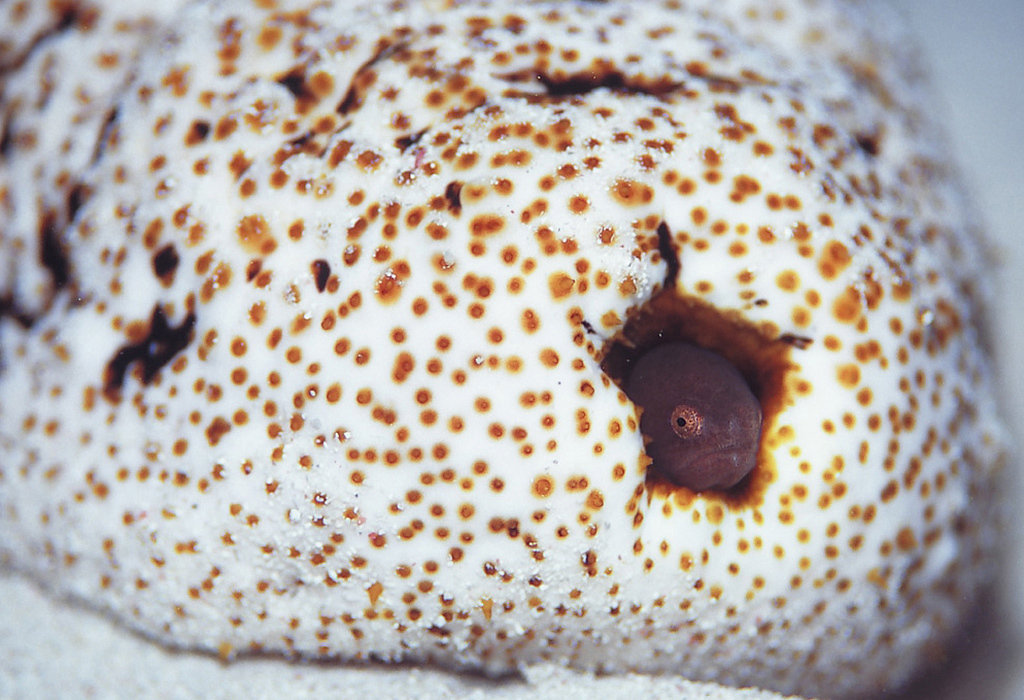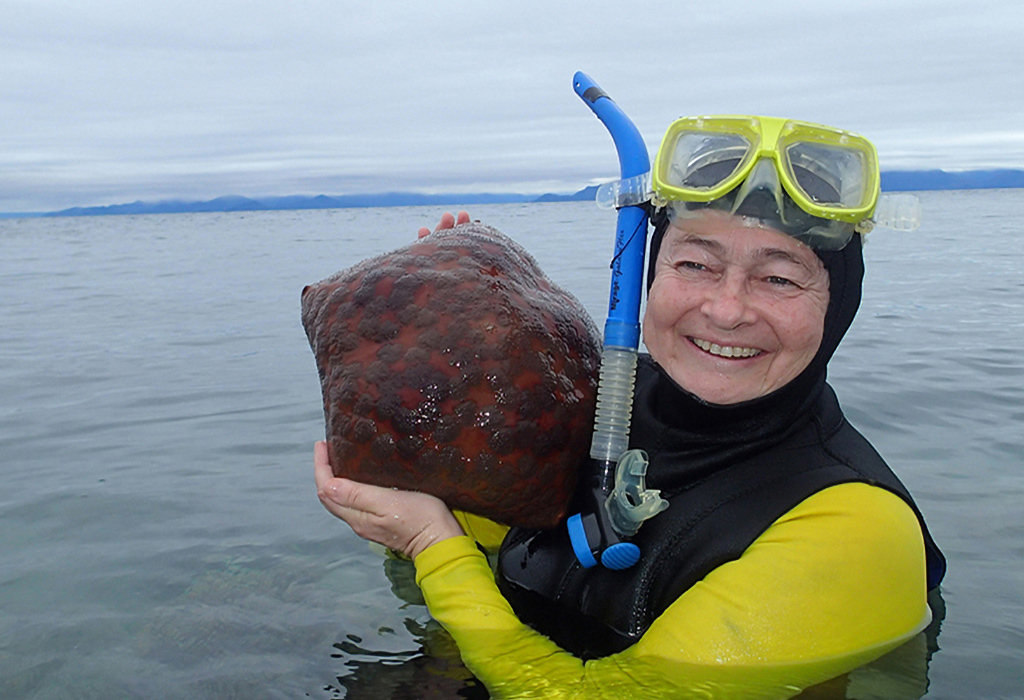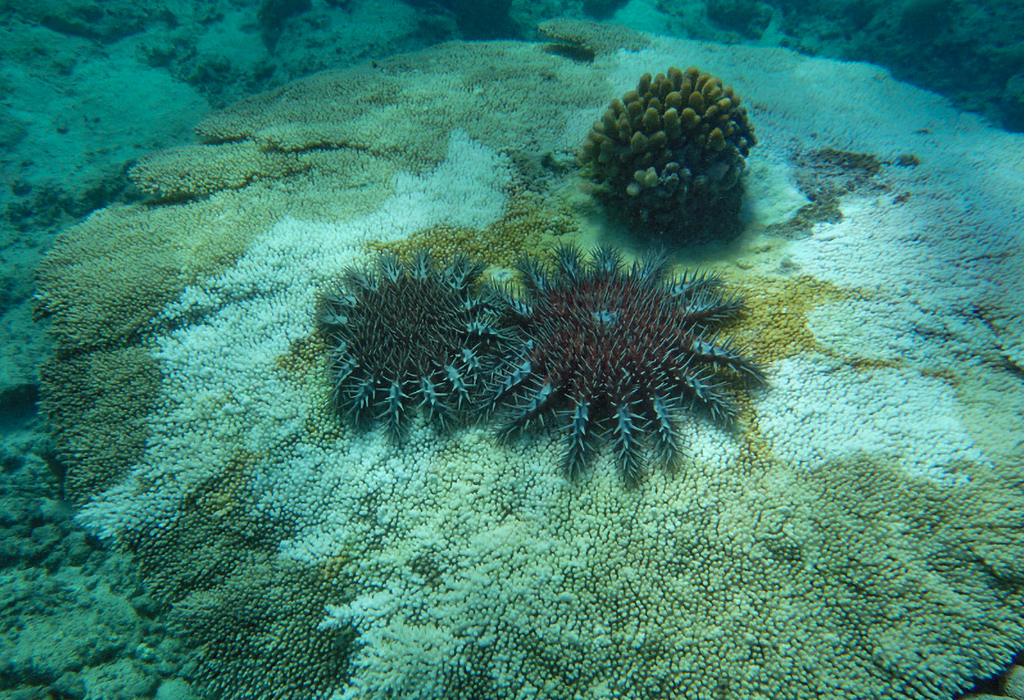The super stars of the sea
Have you heard about pearlfish? They live in the bums of sea cucumbers.
No, it’s not the start of a terrible joke—it’s just one of many examples of how bizarre life in the ocean can be. But the weirdness doesn’t stop there, according to marine biologist Professor Maria Byrne. She was examining a giant sea cucumber specimen that had been sent for classification as a potential new species when she noticed something odd: there was nothing inside it.
“Then I saw there were two massive pearlfish inside this big sea cucumber,” Byrne says. “They’d eaten everything! Because sea cucumbers are so good at regenerating their own body parts … the pearlfish were having a great old time, sitting there with their food source, which would just regenerate its guts and gonads any time the pearlfish nibbled away at it.”

It sounds like something out of a horror movie, but regenerating body parts is a real specialty of echinoderms, the group of animals that includes sea cucumbers, sea stars, sea urchins and similar marine creatures. Most echinoderms can rebuild limbs, internal organs, or even their entire bodies in response to damage or as a defence mechanism.
As well as cloning themselves through asexual reproduction, echinoderms can reproduce sexually by sending egg and sperm cells out into the ocean for fertilisation. Some offspring grow up very quickly. For someone who quite literally wrote the book on Australian echinoderms, Byrne says this feature makes them especially valuable as model organisms for study in the lab.
“You can get the gametes [egg and sperm cells] really easily, and within five or ten days, depending on the species, you’ve got the juveniles,” she says. “So instead of having to wait for three months to get your juvenile, you’ve got them in five days. You can do the whole life history in the lab in a week. I’ve used that really fast development of the Australian echinoderms to address many, many questions that you cannot address anywhere else in the world.”
I’d like to be under the sea
Maria Byrne’s fascination with the underwater world began when she was a young teenager growing up in Ireland, watching films from renowned underwater explorer, Jacques Cousteau. “Every time one of his programs came on, I would be riveted, thinking ‘when I grow up, I want to be underwater, too’,” she says.

Her curiosity was piqued even further when she learned about evolution and genetics from a “feisty nun” with a cabinet full of Drosophila fruit flies at her Catholic high school. “I wanted to know what made animals tick, why animals are where they are in the world, and how did they get there?”
Undeterred by the freezing waters off the coast of Ireland, she learned to scuba dive and took every opportunity to explore the underwater world. Her career eventually brought her to Australia where she was fascinated by the unique echinoderm communities in our waters.
Studying echinoderm biology enables scientists to examine the effects of climate change on the health of marine ecosystems such as the Great Barrier Reef. “Marine heatwaves are really important to try and understand where we’re heading—and we are cooking,” Byrne says. “How will Australian species respond to that? Is it possible for them to adapt? Some species are going to be better at adapting than others.”
An ecosystem functions best when it has the right balance of predator and prey species. Every one of those species has a role to play, so if the balance is out of whack at any level of the system, the other levels are affected. Byrne wants to know how the composition of different species at any level might impact a marine ecosystem’s health. “If a particular species will fill a role and it’s going to be more resilient to climate change than another one, it means the ecosystem will still have all its levels. That’s important to keep ecosystems going.”
Hidden armies of Peter Pan babies
One echinoderm species that seems to be a bit too resilient is the notoriously destructive crown-of-thorns starfish (Acanthaster planci). Despite being native to tropical and sub-tropical coral reef environments around the world, crown-of-thorns starfish are regarded as pests due to their overwhelming numbers in outbreaks and their capacity for coral destruction, especially in Australian waters. The adults have a voracious appetite for consuming living coral polyps, leaving the bare non-living coral skeleton behind. That’s bad news for a coral reef trying to recover to full health after a bleaching event or other environmental stress.

Its success can be attributed to a set of key features that give it the flexibility it needs to thrive in environments prone to change. For starters, it’s known as a ‘boom and bust’ species, able to rapidly increase in number when conditions are right and to scale back when food is scarce. They can split in half to clone themselves as larvae. Adult females can make up to 200 million eggs, and those eggs are comparatively large, so adults don’t need to feed their offspring as much as other species do. “And those larvae may have symbiotic bacteria that live with them, providing nutrition, so they might not even need to feed!” says Byrne. “That’s multiple traits that give them an edge over other species.”
The real kicker, though, is what’s been termed the ‘Peter Pan effect’ of their juvenile form: they have indeterminate growth, which means they can stay in their juvenile form for years before switching to their adult form. Since juveniles eat algae, it means they can stay vegetarian until there’s lots of coral animals available for them to chow down on.
“They’ve got resilient larvae doing all sorts of funky things, resilient juveniles that can just hang out and wait for coral to come,” says Byrne. “After an adult outbreak [of crown-of-thorns starfish] goes through, or after a bleaching event, there may not be as much food on the reef, so they can just hang out eating algae until things get better. That’s the hidden army hypothesis that we’re working on.”
Protecting the reef
It’s easy to see why controlling crown-of-thorns starfish populations is challenging, when even one large adult starfish could seed another outbreak. It is also difficult to predict when those numbers will spiral out of control with so much variability around when juveniles will transition into their coral-munching adult form.
There are still actions we can take to protect our reefs from outbreaks. Monitoring fishing activities more closely to ensure there are enough predators of crown-of-thorns starfish remaining in the water would go some way towards controlling their numbers. Alongside regular culling programs, research is also underway to try and find diseases that could be introduced to crown-of-thorns populations, but Byrne is cautious. “The more you remove by killing them, if there’s a hidden army there, they will just come back again,” she says.
She wants us to look at the bigger picture. “It’s important to understand why we got to where we are with this species. The more information we have to put those jigsaw puzzle pieces together, the closer we might come to finding a solution in the future.”





